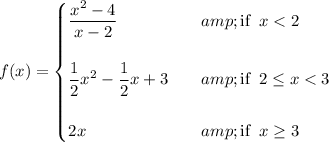Answer:

Explanation:
A function f is continuous at x = a when:



To ensure that f(x) is continuous at x = 2 and x = 3, we need to make sure that the limit of f(x) as x approaches 2 from the left is equal to the limit of f(x) as x approaches 2 from the right, and similarly for x = 3.
First, factor the numerator and simplify the rational function:

As x approaches 2 from the left, x < 2. Therefore, to find the limit as x approaches 2 from the left, substitute x = 2 into the first sub-function:

As x approaches 2 from the right, x > 2. Therefore, to find the limit as x approaches 2 from the right, substitute x = 2 into the second sub-function:

To ensure continuity at x = 2, equate the limits:

Solve for b in terms of a:
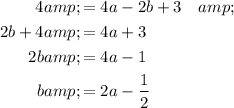
Now, we need to find a and b so that f(x) is continuous at x = 3.
As x approaches 3 from the left, x < 3. Therefore, to find the limit as x approaches 3 from the left, substitute x = 3 into the second sub-function:

As x approaches 3 from the right, x > 3. Therefore, to find the limit as x approaches 3 from the right, substitute x = 3 into the third sub-function:

To ensure continuity at x = 3, equate the limits:

Solve for b in terms of a:
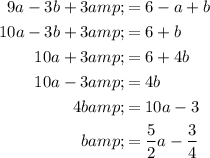
Substitute this expression for b into the equation obtained from continuity at x = 2:

Solve for a:
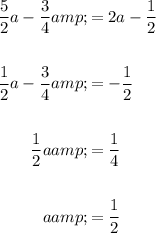
Substitute the found value of a into the expression for b and solve for b:
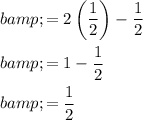
Therefore, the values of a and b that make f(x) continuous at all points are:

So the function f(x) is:
